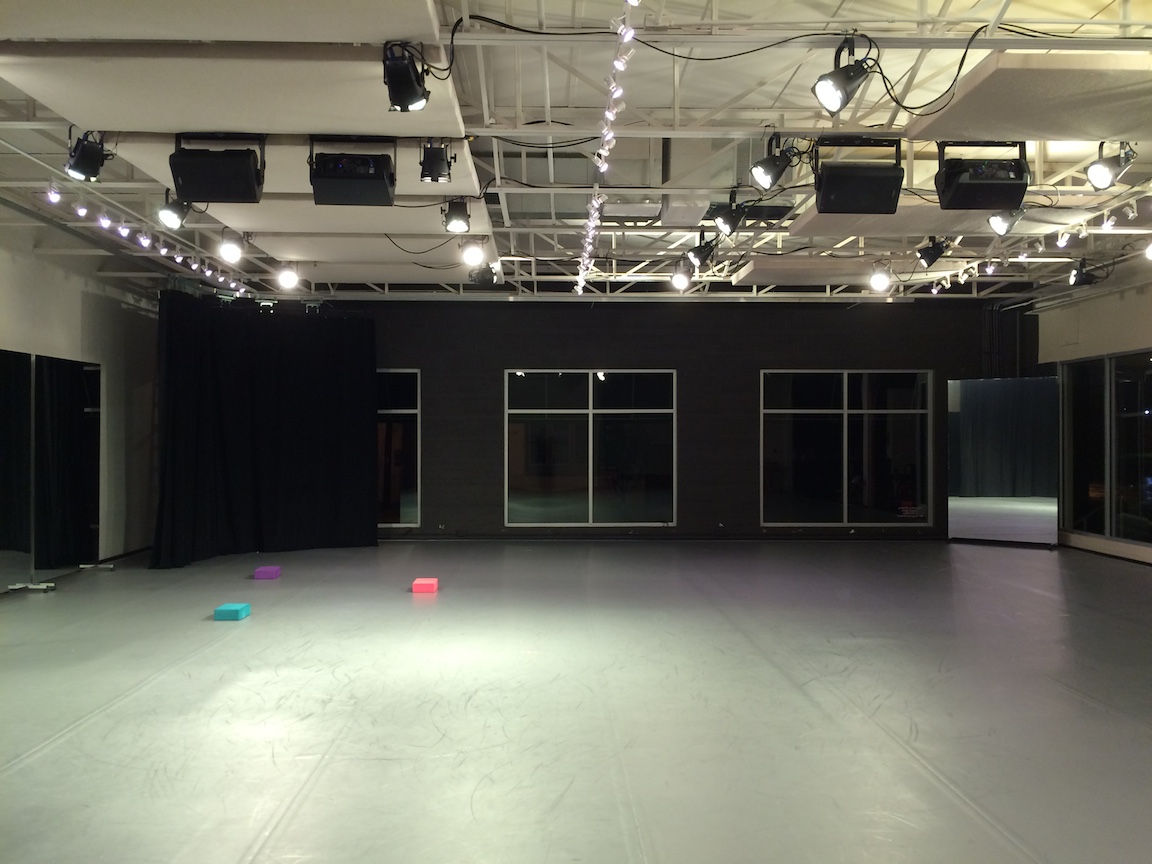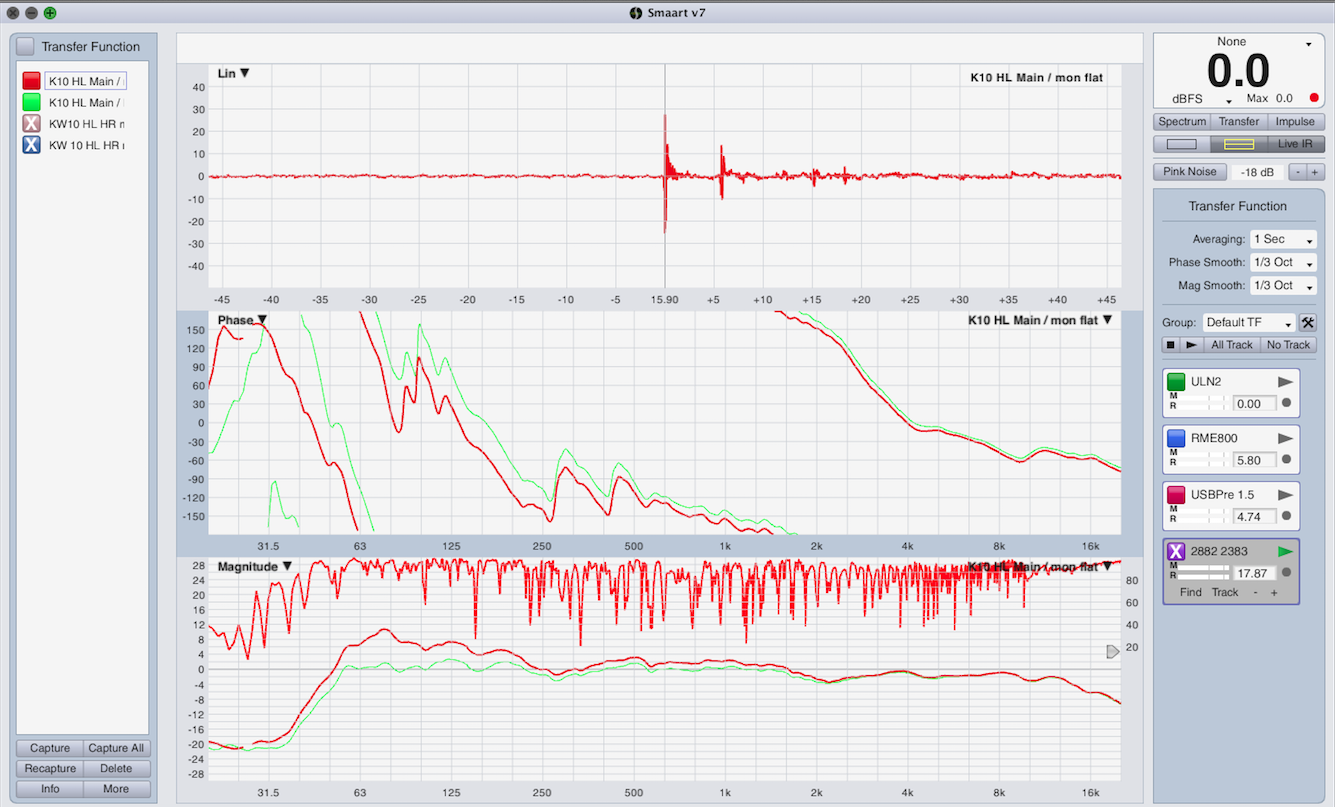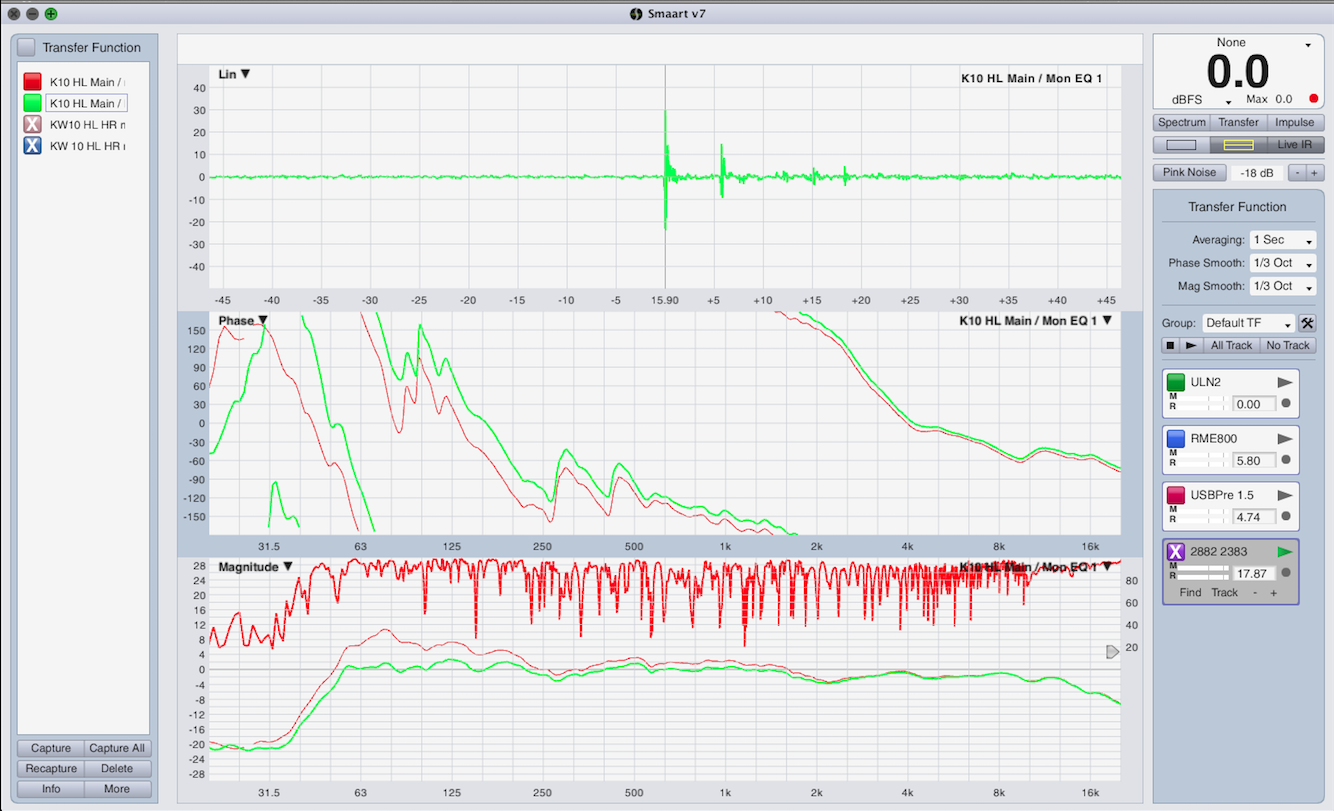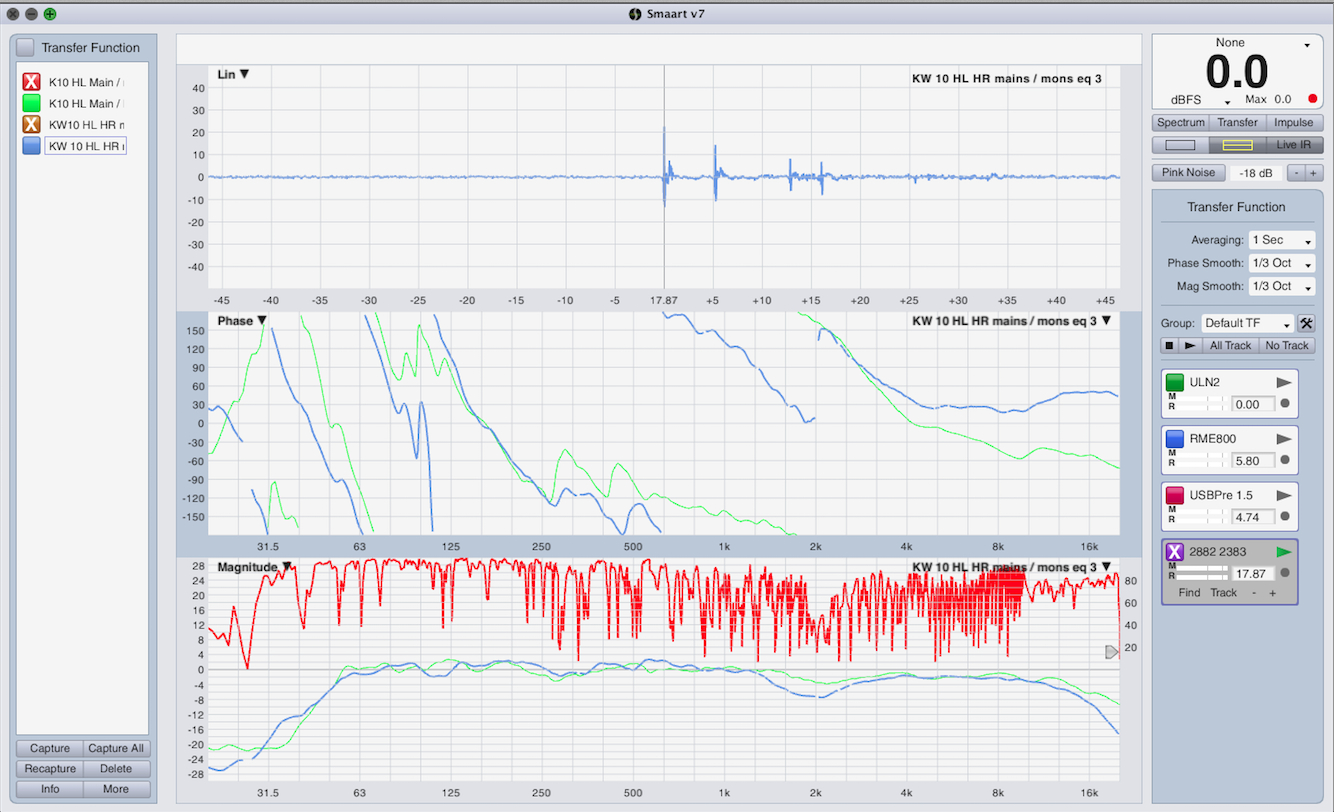There is a special event coming up at the new Bruce Wood Dance Project studio this coming weekend and the installed pair of QSC KW10s were located 90 degrees off axis of the audience. There is also the matter of mains / monitors which ideally would be aimed in opposite directions. How do you do a stereo mains / monitors with (2) speakers? You don’t. You need more speakers. On Friday the organization purchased two more QSC K10 and yokes and tonight I installed them. Two aiming forward toward the audience and two aiming backward toward the dance area.
QSC – K10

There are only (2) drive lines going into the ceiling area at this point so for now HL Main is jumped to the rear facing SR monitor (same signal). What this means as far as the measurement process goes is that I can’t turn one or the other off without a ladder. Fortunately I want to see how they work together since that will be the only way to hear them once I’m finished. With speakers next to each other but aiming in different directions, one would expect the low frequencies that are omni directional to combine but at a certain frequency both speakers would become directional. In effect, the lows are combining and the highs are isolated. With a measurement mic on axis of one speaker but no the other, we will expect there to be excess low end. The following trace (red) shows the two speakers with and without processing (EQ). Notice the excess low end.

The next trace is the same information but with the green trace selected which shows better the post eq curve.

Lastly, I placed the measurement mic near center of the two main speakers to see how the whole system works. In the final trace, you will notice that there is a dip between about 2kHz and 4kHz which I chose to leave alone since one would expect there to be some sort of cancellation at the seam between the two speakers.

The final rehearsal leading up to the event this evening was last night and at around midnight I received the following text from the stage manager: “Sound is in good shape. The speakers sound GREAT!” This is no accident. First I had to advocate for a system design that met their expectations. Then I had to locate the speakers in the best location for their purpose and aim them to avoid reflections while optimizing coverage. Then I had to resolve the inherent low mid build up from having (4) speakers near each other via EQ. Once that was done, a “the speakers sound great” review is typical.

